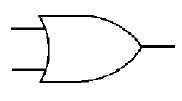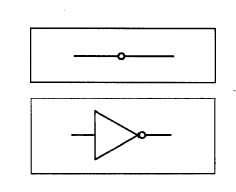2-33
POSITIVE LOGIC is defined as follows: If the signal that activates the circuit (the 1 state) has a
voltage level that is more POSITIVE than the 0 state, then the logic polarity is considered to be
POSITIVE.
NEGATIVE LOGIC is defined as follows: If the signal that activates the circuit (the 1 state) has a
voltage level that is more NEGATIVE than the 0 state, then the logic polarity is considered to be
NEGATIVE.
In DIGITAL LOGIC (positive or negative), the TRUE condition of a statement is represented by
the logic 1 state and the FALSE condition is represented by the logic 0 state.
LOGIC LEVELS High and LOW represent the voltage levels of the two logic states. Logic level
HIGH represents the more positive voltage while logic level LOW represents the less positive (more
negative) voltage. In positive logic, the HIGH level corresponds to the TRUE or 1 state and the LOW
level corresponds to the FALSE or 0 state. In negative logic, the HIGH level corresponds to the FALSE
or 0 state and the LOW level corresponds to the TRUE or 1 state.
A BOOLEAN EXPRESSION is a statement that represents the inputs and outputs of logic gates.
The AND GATE requires all inputs to be HIGH at the same time in order to produce a HIGH
output.
The OR GATE requires one or both inputs to be HIGH in order to produce a HIGH output.
INVERTER (NOT function or negator) is a logic gate used to complement the state of the input
variable; that is, a 1 becomes a 0 or a 0 becomes a 1. It may be used on any input or output of any gate to
obtain the desired result.





